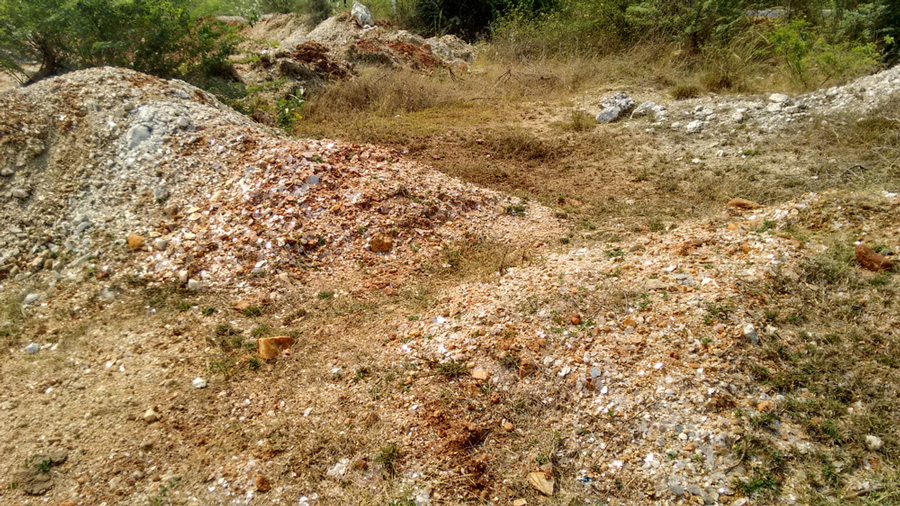India produces 95 metallic, non-metallic, fuel, atomic and minor minerals. The share of mining in India’s GDP is 2.6 per cent but its contribution to the economy is greater as it provides the material foundation for other sectors. India has a detailed set of mining-related laws and rules for minerals exploration, extraction and incidental activities. As per the Constitution, the development of minerals is within the legislative jurisdiction of states as well as the Union. But the shared competence over minerals has often been a subject of contention rather than cooperation.
The Mines and Minerals (Development and Regulation) Act is the main legislation governing the minerals sector in India. Notable amendments were made to the Act in 2015 which changed the minerals concession system from a ‘first-come-first-serve’ basis to competitive auction and included the District Mineral Foundation.
In March 2021, the MMDR bill, 2021 was passed in Parliament through a voice vote despite demands for the bill to be referred to a Select Committee. The bill aimed at increasing and expediting exploration and auction of minerals and coal. It enables the Centre to intervene in matters such as mineral auctions, end use, utilization of funds and so on. As per the existing Act, state governments have the power to notify an area for the granting of mining lease. This lease is granted through competitive bidding. The 2021 amendment curtails the power of the states by adding a proviso that where a state government has not notified the area within a stipulated time the Centre can notify the area for the granting of mining lease. The stipulated time is going to be fixed by the Centre as well. The overall scheme of mining regulation, whereby states are the owners and, therefore, the granters of a lease, stands changed with the Centre empowered to auction mines in states.
Another domain where the Central government has expanded its reach is the DMF. When the DMF was included in the MMDR Act, it was hailed as a historic move to ensure decentralization and address social sustainability in the mining sector. The DMF is a non-profit trust to “work for the interest and benefit of persons, and areas affected by mining-related operations” in any affected district. Under the Act, any DMF is to be constituted, established, and assigned functions only by the state government. The 2021 amendment provides that “the Central Government may give directions regarding composition and utilisation of fund by the District Mineral Foundation.” The whole premise of the DMF was decentralized decision-making: the new provision attempts to reverse that.
The gap between ownership and control over minerals has been at the core of many discussions on resource federalism in India. Irrespective of the concession regime in place, states have always demanded greater autonomy in decision-making related to minerals. Since minerals comprise a major share in the revenue of resource-rich states, they want to defend their fiscal powers with respect to minerals. Granting of lease and licence for mining and prospecting is a prerogative of states, albeit as per the rules laid down by the Centre. The MMDR 2021 amendment has stretched the Centre’s powers by allowing it to auction mines when the states have not notified and auctioned a mine within the period specified by the Centre.
Taxation on mineral rights is a subject within state jurisdiction. However, the scope of the Central law (MMDR Act) is so expansive that it leaves little room for states to levy any additional charge on minerals. Even the royalty rates — the primary mineral revenue accruing to states — are determined and notified by the Centre.
The DMF’s large corpus of Rs 41,650 crore has attracted interest from every level of the government. The DMF was introduced for specific local purposes and beneficiaries but its fund has also faced centralization partly due to instances of inaction and misuse in states. The issues of under-utilization and misuse must be addressed by correcting procedural lapses, not by transferring the power to the Centre.
The 2021 amendment facilitates the Centre’s hold on the important and strategic mining industry but also the mineral resources and wealth of states. There are pros and cons of centralized and decentralized governance in mining. Central oversight or guidance can be instrumental in addressing some of the problems associated with decentralization, such as vested interests, corruption, inadequate capacity, information flows and so on. A decentralized governance of natural resources, including minerals, ensures that those affected by mining and those dependent on mining for employment or revenue are involved in the decision-making and revenue stream around minerals. It also gives the local governments an opportunity to voice concerns that are local or regional in nature. However, the potential of either strategy has seldom been utilized optimally.
This is not the first time that Centre-state issues are emerging in mineral regulation. This shall not be the last time either. There have been several such amendments, ordinances and rules in the past and the sector has often been a fertile ground for contention for resource federalism. Since the issue is unlikely to be settled or buried in the near future, it is imperative that the amendments do not exacerbate the conflict between the Centre and the states but help resolve the limitations in the jurisdiction of each and give effect to cooperative federalism.










